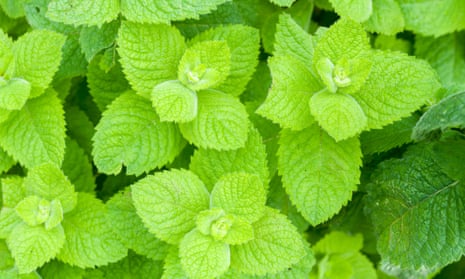Things in my garden – well, the two square metres of concrete that passes for a garden – are not rosy. They are brown, yellow and withered. Looking around sadly, I log the devastation: the maple sapling has gone from “fine” to “inexplicably brown and crispy”. The honeysuckle has succumbed to some kind of mildewy plague and the willow is infested by ants farming aphids (an absolute horror show, albeit a fascinating one).
Even the privet has been munched to lace – I didn’t think anything ate privet. I have mentioned the rat that hangs out on the bird feeder before, and he’s definitely adding a sinister je ne sais quoi to the tableau. None of it would get Monty Don’s heart racing (or perhaps it would, but not in a good way).
“What the hell is wrong with this?” I ask my son, gesticulating at the olive tree I bought my husband for his birthday, now balding faster than he is. My son is the only one here with any affinity for growing things. When people come round, I let them think his carefully tended, flourishing tomato and chilli crops are mine. “I looked it up and it says the problem is either too much or too little water. How is that possible? Make up your mind!”
“It’s like looking up your symptoms on WebMD,” he says. “Totally unhelpful and confusing.” He comes to take a look. “Hmm. It’s probably fungal.”
“That’s worse,” I say, crossly poking a leaf. “Like when the GP says, ‘It’s probably viral,’ and means, ‘I can’t do anything, please go away.’”
This is a bad time to admit you are terrible at gardening. I don’t tick many 2020 hobby boxes. I would no more wild swim than I would cage-fight a Komodo dragon (haven’t you read about that wild swimmer who ended up with a spider in her ear?) I euthanised my sourdough starter and am, at best, ambivalent about cooking – my signature dish is boxed fajitas with the nuclear orange “spice” mix in a sachet. But this horticultural blind spot feels worse, like a moral failing.
Because everyone is at it, aren’t they? Clicking on Instagram is like entering a National Trust garden but without the £15 entrance charge or the scones. It’s a wall of green: homegrown dahlias and sweetpeas, a virtual village produce show of cucumbers, chard and courgettes, and flourishing windowbox herb gardens. It has been building for months: an anxious nation with more time on its hands reacted by sticking those hands into the earth.
We have seen record demand for seeds, compost shortages and lengthening allotment waiting lists. The queue for our local plant shop blows my mind: people wait an hour in the broiling sun to look at fancy ferns.
I know gardening should be good for me. The research is pretty unequivocal. The charity Mind found 94% of participants in gardening schemes felt it had benefited their mental health; a Danish study in 2018 found 10 weeks of gardening had similar effects to 10 weeks of cognitive behavioural therapy. I have loved reading Sue Stuart-Smith’s thoughtful, lyrical exploration of the mental and spiritual benefits of growing things, The Well-Gardened Mind. In it, she looks at history and science, visits prison, school and therapeutic community gardens and draws on 30 years of clinical practice as a psychiatrist and psychotherapist, and her experiences as a (initially reluctant) gardener. It’s a lovely, convincing evocation of gardening as play, healing and refuge.
It does not immediately feel beneficial to your mental health, however, to believe you can transform an unpromising spot into a tiny oasis, full of scent, colour and pollinators, only to be confronted by a repeated spectacle of disease and death. In my crime-scene yard, I note that the teasel I acquired to attract birds – basically a giant thistle – seems to have murdered its pot mate, then died. It takes a special talent to kill a thistle, surely. “Everything I touch dies,” I wail like a character in a made-for-TV movie, kicking a chicken bone dropped by a passing gull.
Can you derive psychological benefits from gardening even when it’s an absolute disaster? I’m starting to think perhaps you can. My yard debacle is gradually forcing me to confront my essential powerlessness. I’ve struggled with that feeling for months; that lack of agency. Most of us have. So rather than finding purpose and perspective through the small triumph of growing things, I’m practising acceptance: I can’t even keep mint alive. I’m not giving up on gardening entirely, but I’m giving up on believing I can control what happens. Let whatever is eating everything keep chomping; let things wither and curl up as I experiment with more or less water; let the weird, probably fungal, yellow spots creep across leaves. I’ll even let the rat eat my mealworms, sometimes. It’s all life of a sort, isn’t it? “Nature is unperturbed by our feelings,” says Stuart-Smith, and that feels quite comforting right now.
Follow Emma on Twitter @BelgianWaffling

